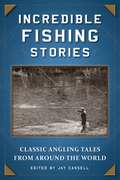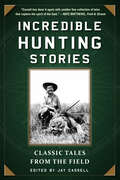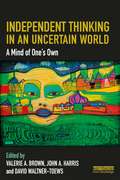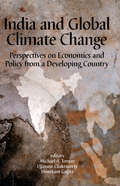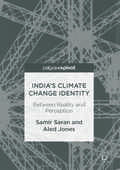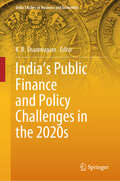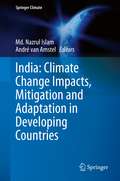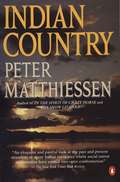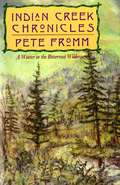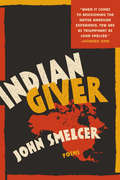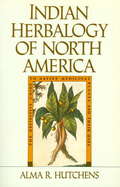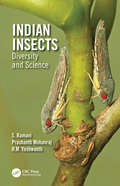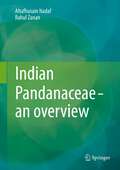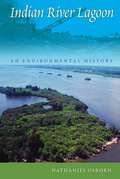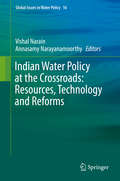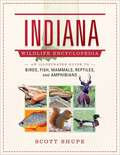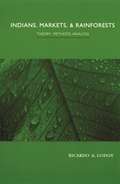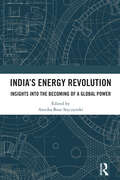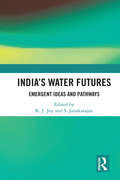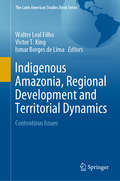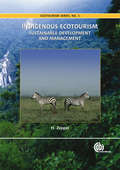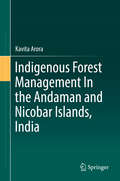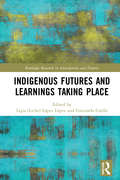- Table View
- List View
Incredible Fishing Stories: Classic Angling Tales from Around the World
by Jay CassellFishing is many things to many people. To some, quietly dangling a worm for a sunfish in a local farm pond is not only exciting, but relaxing and reflective. To others, it’s all about the adventure of traveling to exotic locales and fishing for ten-pound rainbow trout in Alaska or 100-pound tarpon in Central America. To others, it’s an integral part of life, not just a pastime but something to live for. Still others feel compelled to write about it, to try to understand this sport that grips so many. In this collection, you’ll read works from celebrated writers that aim to explore the mysterious grip that fishing has held on so many of us. Within these pages, the reader can: Join Rudyard Kipling as he chases a cow that has stolen his minnow Examine the philosophical side of angling with Thaddeus Norris Fish the Ohio River with John James Audubon Learn what it’s like to fish for Great Lakes steelhead with Jerry Hamza Get used to fishing alongside Alaskan brown bears with Richard Chiappone And many more fishing escapades! With more than three dozen photographs and illustrations that masterfully bring these stories to life, Incredible Fishing Stories is a must-have for every angler looking to share in the joy of their chosen sport.
Incredible Hunting Stories: Classic Tales from the Field
by Jay CassellA diverse collection of remarkable stories that represent the universal thrill of the hunting experience.From stalking the big game of the African savannah, to grouse shooting in the American Northeast, to bear hunting in the Pacific Northwest, a hunter’s experience is as varied as the terrain that he or she traverses. But what is universal is the joy and elation that a hunter experiences while out in the field. Found in this collection are timeless works from celebrated writers that aim to explore the mysterious grip that hunting has held on the hearts and imaginations of those it ensnares for centuries. Within these pages, the reader can:Join Theodore Roosevelt on some of his most legendary hunting tripsSnare woodland birds with Lamar UnderwoodBring down a killer lion with Colonel J. M. PatersonTriumph with Christopher Batin as he brings down a wolfAnd enjoy many more hunting adventures!With more than three dozen photographs and illustrations that masterfully bring these stories to life, Incredible Hunting Stories is a must-have for every hunting and outdoor enthusiast looking to share in the joy of their chosen sport.
Independent Thinking in an Uncertain World: A Mind of One’s Own
by David Waltner-Toews Valerie A. Brown John A. HarrisAny effective response to an uncertain future will require independently thinking individuals working together. Human ideas and actions have led to unprecedented changes in the relationships among humans, and between humans and the Earth. Changes in the air we breathe, the water we drink and the energy we use are evidence of Nature – which has no special interest in sustaining human life – looking out for itself. Even the evolutionary context for humans has altered. Evolutionary pressures from the digital communication revolution have been added to those from natural systems. For humans to meet these challenges requires social re-organisation that is neither simple nor easy. Independent Thinking in an Uncertain World explores workable, field-tested strategies from the frontiers of creating a viable future for humans on Earth. Based on research results from hundreds of social learning workshops with communities worldwide, many of them part of Australian National University’s Local Sustainability Project, authors with diverse interests explore the gap between open-minded individual thinking and closed socially defined knowledges. The multiple dimensions of individual, social and biophysical ways of thinking are combined in ways that allow open-minded individuals to learn from one another.
India and Global Climate Change: Perspectives on Economics and Policy from a Developing Country
by Michael A. Toman Ujjayant Chakravorty Shreekant GuptaThough the impact of climate change will most likely be greatest with the already poor and vulnerable populations in the developing world, much of the writing about the costs and benefits of different policies to reduce greenhouse gas (GHG) emissions is by Western scholars, working in advanced industrialized economies. Drawing the majority of its contributions from authors based at Indian universities and other research centers, India and Global Climate Change provides a developing world perspective on the debate. With a population of over one billion, and an economy that is undergoing substantial restructuring and greatly increased economic growth after a number of years of stagnation, India has an exceptional stake in the debate about climate change policy. Using the Indian example, this volume looks at such policy issues as the energy economy relationships that drive GHG emissions; the options and costs for restricting GHG emissions while promoting sustainable development; and the design of innovative mechanisms for expanded international cooperation with GHG mitigation.
India's Climate Change Identity
by Aled Jones Samir SaranThis book presents a new and innovative approach to understanding the dynamics of international climate change negotiations using India as a focal point. The authors consider India's negotiating position at multilateral climate negotiations and its focus on the notion of 'equity' and its new avatar 'climate justice'. This book delves into the media's representation of India as a rural economy, a rising industrial power, a developing country, a member of the 5 emerging economies (BRICS), and a country with severe resource security issues, in order to examine the diverse and at time divergent narratives on India's national identity in the context of policy formulation. Those researching such diverse fields as international development, politics, economics, climate change, and international law will find this book offers useful insights into the motivations and drivers of a nation's response to climate change imperatives.
India's Public Finance and Policy Challenges in the 2020s (India Studies in Business and Economics)
by K. R. ShanmugamThis book extensively examines various contemporary public finance themes of India, namely fiscal policy and macro economy, public expenditure policy, tax policy, fiscal transfers policy, public debt policy and fiscal imbalance, and environment and climate finance policies. It has three to five chapters devoted to each of these broad themes, with the contributors being eminent economists from the region. While the topics are specific to Indian public finance, they are relevant to global audience to understand about Indian public finance themes and make a comparison with public finance in other countries. The findings and suggestions given in each chapter are based on the latest data, using current methodologies, and are relevant to the times. The book serves as an excellent reference for students in economics, public finance, political science and management, and a valuable tool for professionals such as policymakers, fiscal analysts, and other stakeholders in the areas of global economics and public and finance, in general, and India in particular.
India: Climate Change Impacts, Mitigation and Adaptation in Developing Countries (Springer Climate)
by Md. Nazrul Islam André Van AmstelClimate change will lead to many changes in global development and security especially energy, water, food, society, job, diplomacy, culture, economy and trade. The Intergovernmental Panel on Climate Change (IPCC) defines climate change as: “Any change in climate over time, whether due to natural variability or as a result of human activity.” Global climate change has emerged as a key issue in both political and economic arenas. It is an increasingly questioned phenomenon, and progressive national governments around the world have started taking action to respond to these environmental concerns. This book discusses the issue of food and water security in India under the context of climate change. It provides information to scientists and local government to help them better understand the particularities of the local climate. It offers insight into the changes to natural ecosystems which have affected the local Indian population. Climate change is one of the biggest challenges to Indian society. It can lead to serious impacts on production, life and the environment. Higher temperatures and sea level rise can lead to flooding and cause water salinity problems which bring about negative effects on agriculture and high risks to industry and socio-economic systems in the future.
Indian Country
by Peter MatthiessenAfter winning an eight year legal battle, here is the controversial book that powerfully sheds new light on the plight of Native Americans. Matthiessen's urgent accounts and absorbing journalistic details make it impossible to ignore the message they so eloquently proclaim.
Indian Creek Chronicles: A Winter in the Bitterroot Wilderness
by Pete Fromm"The wardens climbed into their truck, ready to leave. 'You'll need about seven cords of firewood. Concentrate on that. You'll have to get it all in before the snow grounds your truck.'" "Though I didn't want to ask, it seemed important. 'What's a cord?'" So begins Pete Fromm's seven winter months alone in a tent in the Selway-Bitterroot Wilderness guarding salmon eggs. After blundering into this forbidding errand as a college lark, Fromm gradually come face to face with the blunt realities of life as a contemporary mountain man. Brutal cold, isolation, and fearful risks balance against the satisfaction of living a unique existence in modern America. This award-winning narrative is a gripping story of adventure, a rousing tale of self-sufficiency, and modern-day Walden. From either perspective, Fromm lives up to his reputation as one of the West's strongest new voices.
Indian Giver
by John Smelcer"Poetry at its most satirical and courageous. A tremendous book."-Seamus Heaney"Few voices in American literature are so honest and daring."-Mark Strand"One of our most brilliant poets."-Roxanne Dunbar-Ortiz"I feel the primal grain and temper of the genuine here."-William Heyen"A lament, a protest, an inextinguishable song."-Sherod Santos"Among the best and most original poets in America."-Stanley Kunitz"Nothing short of splendid."-Robert Nazarene"The kind of energy found in the poems of William Carlos Williams and Gary Snyder."-Joseph BruchacThese poems tell harsh truths of hopelessness and genocide. The confusion of children whose religion is forbidden; the ironic poverty of a lottery winner; an alternate American history in which Columbus turns and sails away-in deceptively simple language, we hear the protest of survivors. "'Indian' is not a derogatory word. It's what we call ourselves."AFTER A SERMON AT THE CHURCH OF INFINITE CONFUSIONAt ten, Mary Caught-in-Betweencame home from sunday school,told every animal and bird and fishthey couldn't talk anymore,told her drum it couldn't sing anymore,told her feet they couldn't dance anymore,told her words they weren't words anymore,told Raven and Coyote they weren't gods anymore,said god was a starving white manwith long hair and blue eyes and a beardwho no one loved enough to savewhen they nailed him to a totem pole.John Smelcer has written over forty books of poetry and prose. He is a member of the Alaskan Ahtna tribe.
Indian Herbalogy of North America
by Alma R. HutchensFor more than twenty years this pioneering work had served as a bible for herbalists throughout the world. It is an illustrated encyclopedic guide to more than two hundred medicinal plants found in North America, with descriptions of each plant's appearance and uses, and directions for methods of use and dosage. Native American traditions are compared with traditional uses of the same plants among other cultures where the science of herbs has flourished, particularly in Russia and China. Included is an annotated bibliography of pertinent books and periodicals.
Indian Hotspots: Vertebrate Faunal Diversity, Conservation And Management Volume 2
by Chandrakasan Sivaperuman Krishnamoorthy VenkataramanThis book offers a comprehensive account of India’s four biodiversity hotspots: the Himalaya, Indo-Burma, Western Ghats and Sri Lanka and Andaman and Nicobar Islands. With a focus on tropical rainforests, it includes more than 30 chapters covering different vertebrate fauna e.g. fishes, amphibians, reptiles, birds, and mammals, as well as topics such as conservation and management aspects.Written by experts in the field of biodiversity conservation and management, it offers ample new insights into a number of subjects related to the faunal communities of tropical forest ecosystems, providing a valuable resource for conservationists and researchers in the field of flora and fauna diversity.
Indian Insects: Diversity and Science
by S. Ramani Prashanth Mohanraj Yeshwanth HmInsects are the most interesting and diverse group of organisms on earth, many of which are useful as pollinators of crops and wild plants while others are useful as natural enemies keeping pestiferous insects in check. It is important to conserve these insects for our survival and for this the diversity of insect species inhabiting the different ecosystems of our country must be known. The cornerstone to studies of any kind of organismal diversity is their taxonomic identity. Even after over two and half centuries of studies, so little is known of the insect wealth of our country. It has contributions from taxonomists who have been studying Indian insects for long, this book offers up to date information on many important groups of Indian insects seeking to fill the lacuna of a long felt need for a comprehensive work on the taxonomy of Indian insects. Salient features: Provides an up-to-date taxonomy of major insect groups of India Presents identification keys with illustrations of several important groups of Indian insects Gives a new insight into why insects are so abundant Addresses fundamental questions in mechanoreception and cross kingdom interactions using insects as model systems Indian Insects: Diversity and Science is a festschrift to Professor C. A. Viraktamath, an insect taxonomist par excellence. It has been designed to cater to the needs of academicians, researchers and students who wish to identify insects collected from local environments and will be an invaluable aid for those working in the areas of systematics, ecology, behaviour, diversity and the conservation of insects.
Indian Pandanaceae - an overview
by Altafhusain Nadaf Rahul ZananIndian screw pine family Pandanaceae represents three genera, in which genus Pandanus and Benstonea are distributed in two hotspots in India - the Western Ghats and the Northeast Himalayan region. For the first time, Indian Pandanaceae has been assessed for its taxonomic status and phylogenetic relationship. The extensive survey by the authors led to the discovery of three new Pandanus species (two from the Western Ghats and one from the Northeast Himalaya). The present taxonomic revision confirmed total number of Pandanus species to 14 that are distributed in the Southern India (9 species) and Northeast Himalayan region (5 species). Genus Benstonea is represented by two species, one from Southern India and another species common to both regions. A detailed species identification key is given along with conservation status of each species following IUCN Red List Categories and Criteria (2001). The study revealed that, out of 16 Pandanus and Benstonea species, six species are under threatened categories. In recent years, a chloroplast DNA-based molecular phylogenetic approach has been followed to understand the evolutionary relationship among the plant species. The interrelationship among the 14 Pandanus species at infrageneric level has been worked out using this approach, which has led to the rearrangement of some species to the subgenera proposed by Stone (1974). Moreover, the close relationship between Pandanus and Benstonea has been confirmed and the interrelationship of Indian Pandanus genus in global context is given. This book also describes the economic importance of each Pandanus species.
Indian River Lagoon: An Environmental History
by Nathaniel OsbornFlorida Historical Society Stetson Kennedy Book Award Stretching along 156 miles of Florida's East Coast, the Indian River Lagoon contains the St. Lucie estuary, the Mosquito Lagoon, Banana River Lagoon, and the Indian River. It is a delicate ecosystem of shifting barrier islands and varying salinity levels due to its many inlets that open and close onto the ocean. The long, ribbon-like lagoon spans both temperate and subtropical climates, resulting in the most biologically diverse estuarine system in the United States.Nineteen canals and five man-made inlets have dramatically reshaped the region in the past two centuries, intensifying its natural instability and challenging its diversity. Indian River Lagoon traces the winding story of the waterway, showing how humans have altered the area to fit their needs and also how the lagoon has influenced the cultures along its shores. Now stuck in transition between a place of labor and a place of recreation, the lagoon has become a chief focus of public concern. This book provides a much-needed bigger picture as debates continue over how best to restore this natural resource.
Indian Water Policy at the Crossroads: Resources, Technology and Reforms
by Vishal Narain Annasamy NarayanamoorthyThis book reviews and analyzes emerging challenges in water policy, governance and institutions in India. Recent times have seen the contours of water policy shaped by new discourses and narratives; there has been a pluralization of the state and a changing balance of power among the actors who influence the formulation of water policy. Discourses on gender mainstreaming and Integrated Water Resource Management (IWRM) are influential, though they have often remained rhetorical and difficult to put into practice. Debate over property rights reform and inter-linking of rivers has been polarized. At the same time, there has been a rising disenchantment with policy initiatives in participatory irrigation management, cleaning up of water bodies and pollution control. Fast depletion of groundwater resources and the importance of adopting new irrigation methods are getting increased focus in the recent policy dialogue. The contributors review current debate on these and other subjects shaping the governance of water resources, and take stock of new policy developments. The book examines the experience of policy implementation, and shows where important weaknesses still lie. The authors present a roadmap for the future, and discuss the potential of alternative approaches for tackling emerging challenges. A case is made for greater emphasis on a discursive analysis of water policy, to examine underlying policy processes. The contributors observe that the ongoing democratization of water governance, coupled with the multiplication of stresses on water, will create a more visible demand for platforms for negotiation, conflict resolution and dialogue across different categories of users and uses. Finally, the authors propose that future research should challenge implicit biases in water resources planning and address imbalances in the allocation of water from the perspectives of both equity and sustainability.
Indiana Wildlife Encyclopedia: An Illustrated Guide to Birds, Fish, Mammals, Reptiles, and Amphibians (Wildlife Encyclopedias)
by Scott ShupeIncluded are over 700 color photographs, depicting the different species of mammals, reptiles, amphibians, birds, and fish, while offering over 600 range maps to show their territory, along with basic information for the biology of each animal, Indiana's wildlife has always played an important role in the history of human beings inhabiting the state. Although the state&’s wildlife is still an important resource for human consumption, wildlife is also increasingly important in today&’s culture for its intrinsic, aesthetic value. For many Hoosiers, the age-old traditions of hunting and fishing have been replaced by a desire to simply observe wildlife and experience nature. But most Indianans are largely unaware of the diversity of species inhabiting their state. This volume is intended to provide an introduction to the state&’s fresh water fishes, amphibians, reptiles, birds, and mammals. In Indiana Wildlife Encyclopedia, nationally known naturalist Scott Shupe has collected information on all the native wildlife that reside in the Hoosier State. The fifth in a series of state wildlife encyclopedias, this book will be a handy, usable, layman&’s guide to Indiana's native wildlife. Shupe includes the size, habitat, and abundance of each species located in the state. Whether you&’re a lover of the outdoors, photography, or are looking to learn more about your state, this comprehensive guide will teach you about the wonderful wildlife that covers the water, earth, and skies of Indiana.
Indians, Markets, and Rainforests: Theoretical, Comparative, and Quantitative Explorations in the Neotropics
by Ricardo GodoyGodoy investigates five lowland Amerindian societies of tropical Latin America--all of which are experiencing deep changes as they modernize--to discover the results of a market economy on both indigenous peoples and the conservation of tropical rainforest flora and fauna.
Indians, Markets, and Rainforests: Theoretical, Comparative, and Quantitative Explorations in the Neotropics
by Ricardo GodoyThis book addresses two important and related questions: does participation in a market economy help or hurt indigenous peoples and how does it affect the conservation of tropical rainforest flora and fauna? Oddly, there have been few quantitative studies that have addressed these issues.Ricardo Godoy's research takes an important step toward rectifying this oversight by investigating five different lowland Amerindian societies of tropical Latin America—all of which are experiencing deep changes as they modernize. Godoy examines the effect of markets on a broad range of areas including health, conservation of flora and fauna, leisure, folk knowledge, reciprocity, and private time preference. He concludes that, contrary to considerable anthropological theory, the effect of markets on the quality of life and the rainforest are often unclear or benign. Godoy uses multivariate techniques to examine the changes modernization has had on many indicators of the quality of life and the environment and concludes that the seeds of socioeconomic differentiation may already lie dormant in simple economies.The impact of modernization on lowland Amerindians is a topic of great concern to anthropologists, researchers, and policymakers in developing nations, and this book is a significant contribution to the debate about the likely future of indigenous people.
India’s Energy Revolution: Insights into the Becoming of a Global Power
by Annika Bose StyczynskiIndia is the third-largest emitter of greenhouse gases, which makes it an important player whose climate mitigation actions and inactions are closely scrutinised. This book studies developments in India’s energy system from a governance perspective. It presents a unique compilation and synthesis of research findings that capture achievements, shortcomings, and persistent and transient challenges of India’s transition towards a net-zero economy by 2070.The book grounds its analysis in domestically formulated goals and reflects on dynamics at the structural level of India’s multi-scalar innovation system, by highlighting the influencing factors of energy system status and change. It presents the perspectives and positions of different actor groups, studies the market and business, and discusses cases influenced by existing or changing institutions across the whole spectrum of energy resources from fossil to non-fossil fuels and respective technologies.The volume will be useful for students and researchers in energy governance, energy policy and economics, socio-technical transition studies, energy systems engineering, sustainable development, and environmental studies. It will also be of interest to policymakers and investors.
India’s Water Futures: Emergent Ideas and Pathways
by K. J. Joy S. JanakarajanWhen it comes to water, we flush and forget. We use, abuse and almost never recycle. Water sector in India, since the 1990s, has seen some new ideas formalised legally and institutionally, while others are still emerging and evolving. Confronting the reality of current water management strategies, this volume discusses the state of the Indian water sector to uncover solutions that can address the imminent water crises. This book: Analyses the growing water insecurity, increase in demand, inefficiency in water use, and growing inequalities in accessing clean water; Sheds light on water footprint in agricultural, industrial and urban use, pressures on river basin management, depleting groundwater resources, patterns of droughts and floods, watershed based development and waste water and sanitation management; Examines water conflicts, lack of participatory governance mechanisms, and suggests an alternative framework for water regulation and conflict transformation; Highlights the relationship between gender discourse and water governance; Presents an alternative agenda for water sector reforms. This volume, with hopes for a more water secure future, will interest scholars and researchers of development studies, environment studies, public policy, political studies, political sociology, and, NGOs, media and think tanks working in this area.
Indigenous Amazonia, Regional Development and Territorial Dynamics: Contentious Issues (The Latin American Studies Book Series)
by Victor T. King Walter Leal Filho Ismar Borges de LimaThis book brings together a valuable collection of case studies and conceptual approaches that outline the present state of Amazonia in the 21st century. The many problems are described and the benefits, as well as the achievements of regional development are also discussed. The book focuses on three themes for discussion and recommendations: indigenous peoples, their home (the forest), and the way(s) to protect and sustain their natural home (biodiversity conservation). Using these three themes this volume offers a comprehensive critical review of the facts that have been the reality of Amazonia and fills a gap in the literature.The book will appeal to scholars, professors and practitioners. An outstanding group of experienced researchers and individuals with detailed knowledge of the proposed themes have produced chapters on an array of inter-related issues to demonstrate the current situation and future prospects of Amazonia. Issues investigated and debated include: territorial management; indigenous territoriality and land demarcation; ethnodevelopment; indigenous higher education and capacity building; natural resource appropriation; food security and traditional knowledge; megadevelopmental projects; indigenous acculturation; modernization of Amazonia and its regional integration; anthropogenic interventions; protected areas and conservation; political ecology; postcolonial issues, and the sustainability of Amazonia.
Indigenous Ecotourism: Sustainable Development and Management
by Heather D. ZeppelDealing with indigenous ecotourism as a special type of nature-based tourism, Indigenous Ecotourism examines the key principles of this field through global case studies and analyzes the key factors for sustainable development.
Indigenous Forest Management In the Andaman and Nicobar Islands, India
by Kavita AroraThis book offers an extensive study of indigenous communities in the Andaman and Nicobar Islands, India, and their methods of forest conservation, along with an exploration of the impact of forestry operations in the islands and the wide scale damage they have incurred on both the land and the people. Through an in-depth analysis of the contrasting indigenous practices and governmental forestry schemes, the author has compared the modern ‘Joint Forest Management’ resolution with the ethos and practices of the indigenous people of the Andaman and Nicobar Islands. Throughout the book, readers will learn about the different indigenous communities inhabiting these islands and the treasure of knowledge each of them provide on forest conservation. The book establishes that the notion of knowledge is politicized by the dominant culture in the context of Andaman’s forest tribes, and traces how this denial of the existence of indigenous knowledge by government officials has led to reduced forest area in the region. The book also explores and analyses strategies to utilize and conserve the tribes' profound knowledge of the biodiversity of the islands and study their efforts towards forest conservation, protection and rejuvenation.
Indigenous Futures and Learnings Taking Place (Routledge Research in Anticipation and Futures)
by Ligia López LópezSingularizing progressive time binds pasts, presents, and futures to cause-effect chains overdetermining existence in education and social life more broadly. Indigenous Futures and Learnings Taking Place disrupts the common sense of "futures" in education or "knowledge for the future" by examining the multiplicity of possible destinies in coexistent experiences of living and learning. Taking place is the intention this book has to embody and world multiplicity across the landscapes that sustain life. The book contends that Indigenous perspectives open spaces for new forms of sociality and relationships with knowledge, time, and landscapes. Through Goanna walking and caring for Country; conjuring encounters between forests, humans, and the more-than-human; dreams, dream literacies, and planes of existence; the spirit realm taking place; ancestral luchas; Musquem hən̓q̓əmin̓əm̓ Land pedagogies; and resoluteness and gratitude for atunhetsla/the spirit within, the chapters in the collection become politicocultural and (hi)storical statements challenging the singular order of the future towards multiple encounters of all that is to come. In doing so, Indigenous Futures and Learnings Taking Place offers various points of departure to (hi)story educational futures more responsive to the multiplicities of lives in what has not yet become. The contributors in this volume are Indigenous women, women of Indigenous backgrounds, Black, Red, and Brown women, and women whose scholarship is committed to Indigenous matters across spaces and times. Their work in the chapters often defies prescriptions of academic conventions, and at times occupies them to enunciate ontologies of the not yet. As people historically fabricated "women," their scholarly production critically intervenes on time to break teleological education that births patriarchal-ized and master-ized forms of living. What emerges are presences that undiscipline education and educationalized social life breaking futures out of time. This book will be of great interest to students and scholars of Indigenous studies, future studies, post-colonial studies in education, settler colonialism and coloniality, diversity and multiculturalism in education, and international comparative education.
